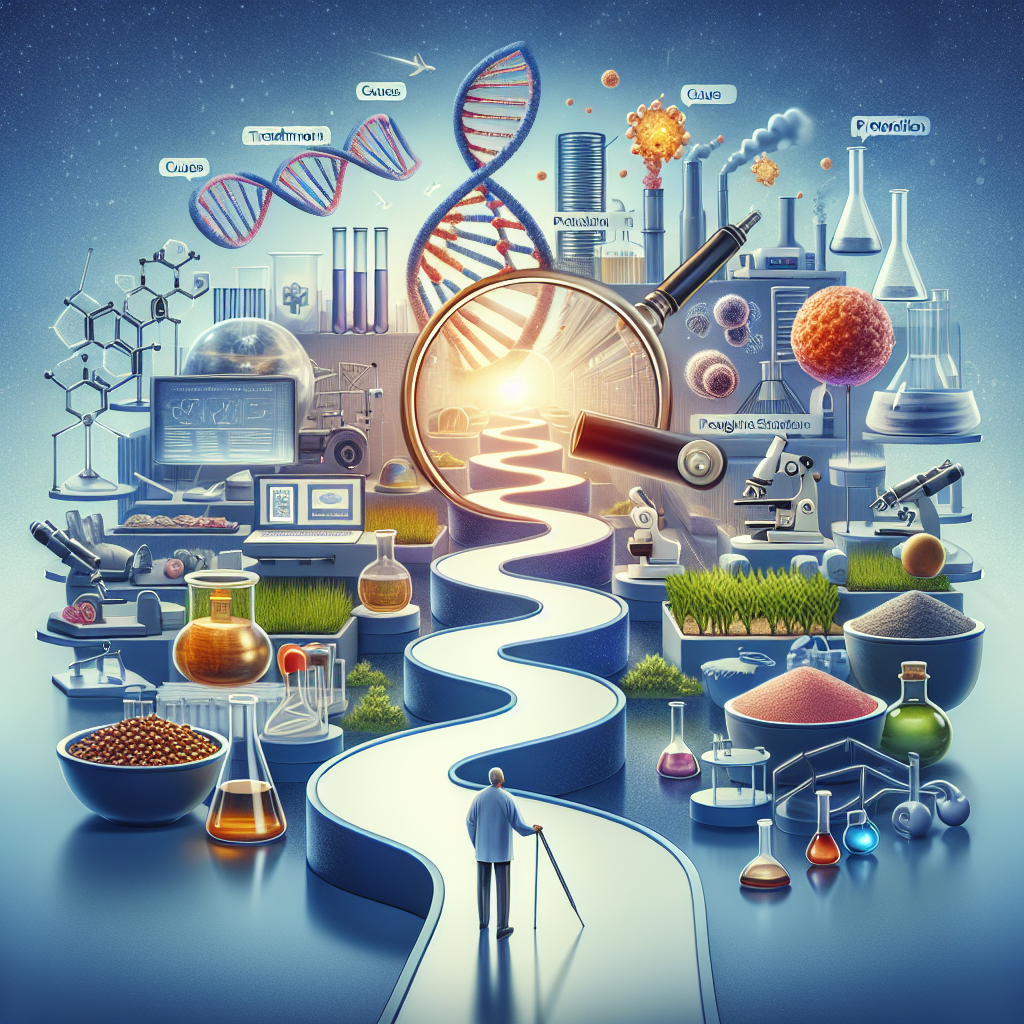
Understanding Cancer: An Overview
Cancer is a complex group of diseases characterized by the uncontrolled growth and spread of abnormal cells. This condition can develop in virtually any organ or tissue of the body, making it a significant health concern globally. According to the World Health Organization, cancer is a leading cause of death worldwide, accounting for nearly 10 million deaths in 2020 (1). Understanding the nature of cancer, its risk factors, and the available treatment options is crucial for managing and potentially preventing this disease.
Types of Cancer
There are more than 100 different types of cancer, each classified by the type of cell initially affected. Common cancers include breast, lung, colon, and prostate cancer. For instance, breast cancer originates in the breast tissue and is the most common cancer among women worldwide, with an estimated 2.3 million new cases diagnosed in 2020 (2). Lung cancer, often linked to smoking, is the leading cause of cancer death globally, with a significant impact on both men and women (3). The diversity of cancer types necessitates tailored approaches to diagnosis and treatment.
Causes and Risk Factors
Cancer arises from the transformation of normal cells into tumor cells in a multi-stage process that generally progresses from a pre-cancerous lesion to a malignant tumor. These changes are the result of the interaction between a person’s genetic factors and three categories of external agents, including physical carcinogens (such as ultraviolet and ionizing radiation), chemical carcinogens (such as asbestos, tobacco smoke, and aflatoxin), and biological carcinogens (such as infections from certain viruses, bacteria, or parasites) (4). Lifestyle factors, such as smoking, diet, and physical activity, also play significant roles in cancer risk. For example, a study published in the Journal of the National Cancer Institute found that a diet high in red and processed meats increases the risk of colorectal cancer (5).
Symptoms and Diagnosis
The symptoms of cancer can vary widely depending on the type and stage of the disease. Common signs include unexplained weight loss, fatigue, persistent pain, and changes in skin or moles. Early detection is critical for improving outcomes, and regular screenings are recommended for certain cancers. Diagnostic methods include imaging tests like X-rays and CT scans, laboratory tests such as blood work, and biopsies, where a sample of tissue is examined under a microscope. A study in the journal Cancer highlighted the importance of early detection in improving survival rates for breast cancer (6).
Treatment Options
Treatment for cancer depends on the type, location, and stage of the cancer, as well as the patient’s overall health. Common treatments include surgery, chemotherapy, radiation therapy, immunotherapy, and targeted therapy. Surgery is often the first line of treatment for many solid tumors, aiming to remove the cancerous tissue. Chemotherapy uses drugs to kill cancer cells, while radiation therapy uses high-energy rays to target and destroy cancer cells. Immunotherapy and targeted therapy are newer approaches that harness the body’s immune system or target specific cancer cell characteristics, respectively. A meta-analysis published in The Lancet Oncology showed that combining immunotherapy with chemotherapy significantly improved outcomes for patients with advanced lung cancer (7).
Prevention and Lifestyle
Preventing cancer involves a combination of lifestyle choices and regular health screenings. Key preventive measures include maintaining a healthy diet rich in fruits and vegetables, engaging in regular physical activity, avoiding tobacco and excessive alcohol consumption, and protecting skin from UV radiation. The American Cancer Society recommends that adults engage in at least 150 minutes of moderate-intensity or 75 minutes of vigorous-intensity activity each week to reduce cancer risk (8). Vaccinations against certain viruses, such as the human papillomavirus (HPV), can also prevent cancers associated with these infections.
Survivorship and Support
Surviving cancer is a journey that extends beyond treatment. Many survivors face long-term effects and challenges, including physical, emotional, and financial issues. Support systems, including cancer support groups, counseling, and rehabilitation programs, play a crucial role in helping survivors navigate life after cancer. Research from the Journal of Clinical Oncology emphasizes the importance of comprehensive survivorship care plans that address the multifaceted needs of cancer survivors (9).
Research and Future Directions
Ongoing research continues to advance our understanding of cancer and improve treatment outcomes. Genomic sequencing and precision medicine are at the forefront of these efforts, allowing for more personalized treatment approaches. For instance, a study in Nature Medicine demonstrated how genomic profiling can identify specific mutations in cancer cells, leading to targeted therapies that improve patient outcomes (10). Additionally, clinical trials are essential for testing new treatments and understanding their effectiveness and safety.
SOURCES
- World Health Organization – Cancer
- World Cancer Research Fund International – Breast Cancer
- American Cancer Society – Lung Cancer
- National Cancer Institute – Carcinogens
- Journal of the National Cancer Institute – Diet and Colorectal Cancer
- Cancer Journal – Early Detection and Breast Cancer
- The Lancet Oncology – Immunotherapy and Chemotherapy for Lung Cancer
- American Cancer Society – Guidelines for Nutrition and Physical Activity
- Journal of Clinical Oncology – Survivorship Care Plans
- Nature Medicine – Genomic Profiling and Targeted Therapies
Are you looking for articles on men’s health, wealth, and lifestyle?
We’re talking real, actionable advice that cuts through the noise. Whether it’s getting jacked, stacking cash, or leveling up your life. No fluff, just the good stuff to help you dominate in every area. We’re here to help you build the life you actually want.
